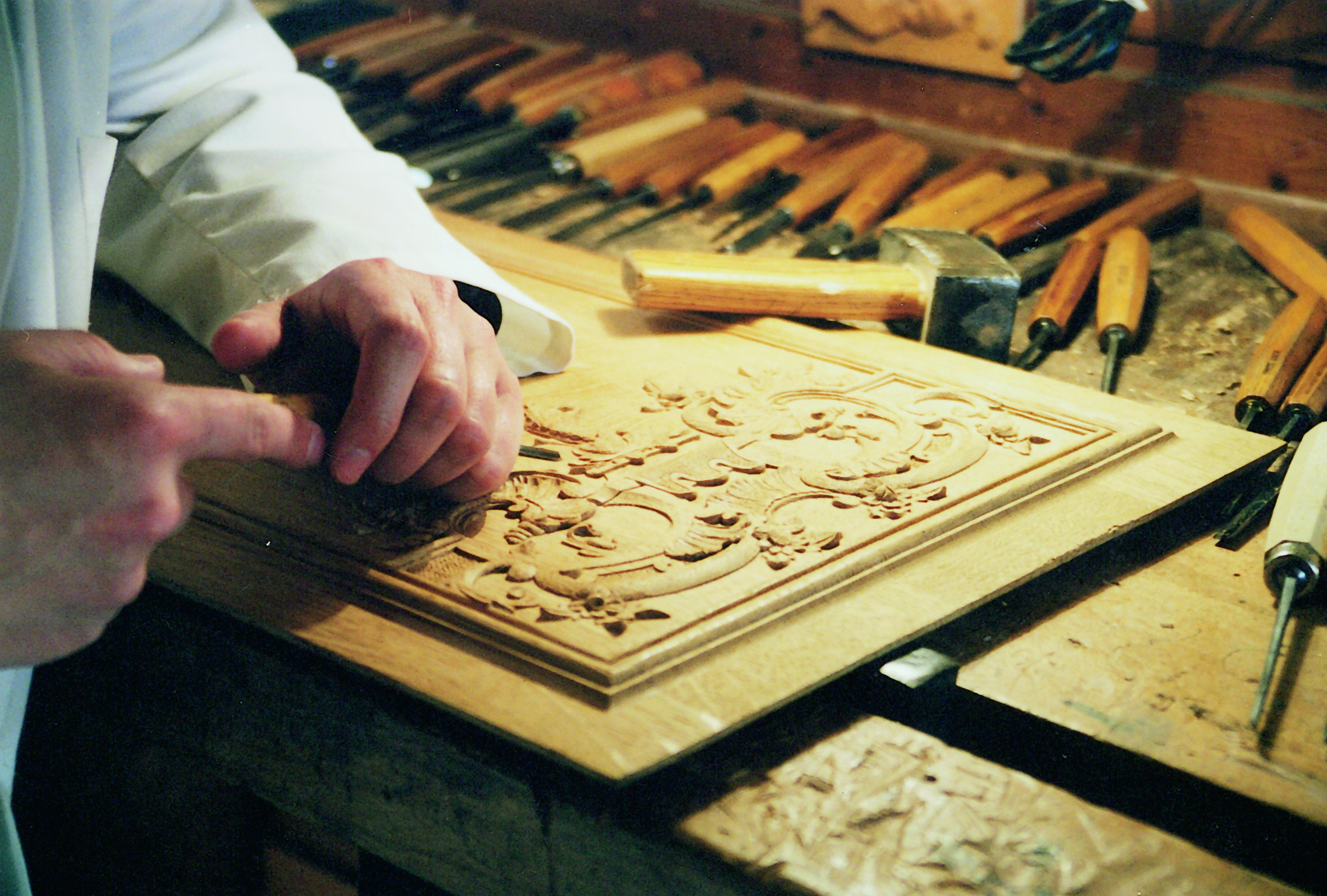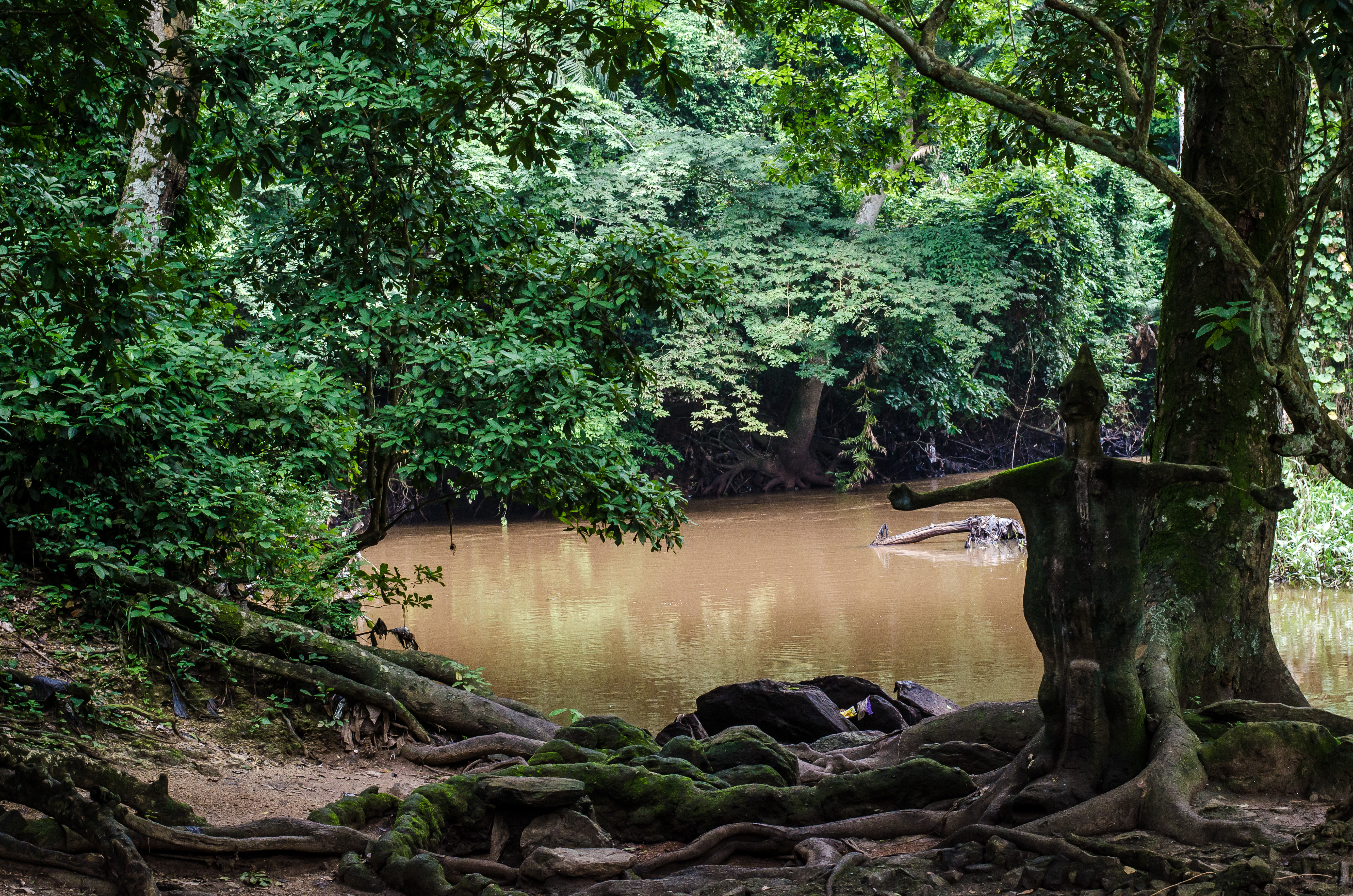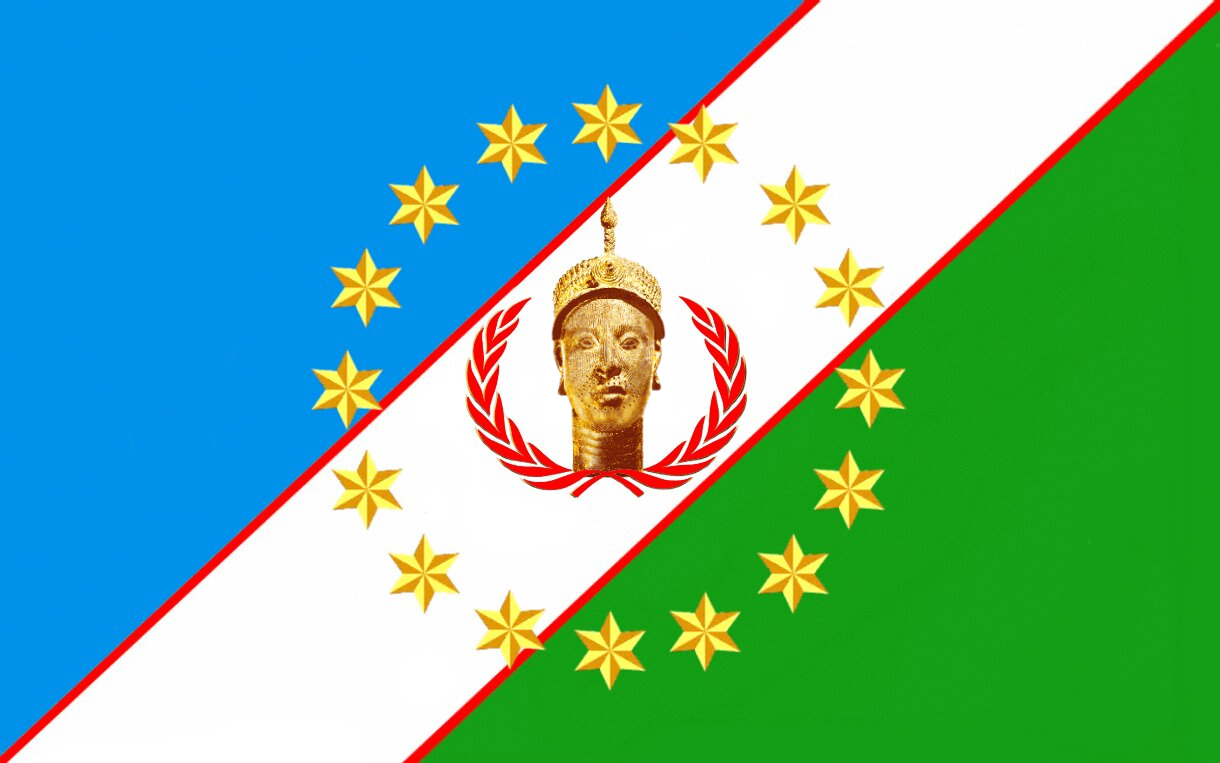|
Akin Fakeye
Akin Fakeye (né Akinlabi Fakeye; born 1936), is a Nigerian artist who works in the medium of wood carving. Biography Fakeye was born in 1936 in Ila Orangun, Osun state, Nigeria. The Fakeye family is a multigenerational group of Yoruba The Yoruba people (, , ) are a West African ethnic group that mainly inhabit parts of Nigeria, Benin, and Togo. The areas of these countries primarily inhabited by Yoruba are often collectively referred to as Yorubaland. The Yoruba constitute ... sculptors. His father, Adewuyi Oguntunde Fakeye, was a master carver. As was tradition, Akin Fakeye was taught the art of carving by his father. Upon the death of his father, Akin went into apprenticeship under his brother Lamidi Fakeye from 1958–1967. He established himself in his own studio in 1968. Since that time, he has worked on a number of collaborations with his brother and has also trained twenty apprentices, including Ayo Bankole and his own sons, Jimoh Fakeye, Sulaiman Fakeye, Akeem Fak ... [...More Info...] [...Related Items...] OR: [Wikipedia] [Google] [Baidu] |
Wood Carving
Wood carving is a form of woodworking by means of a cutting tool (knife) in one hand or a chisel by two hands or with one hand on a chisel and one hand on a mallet, resulting in a wooden figure or figurine, or in the sculptural ornamentation of a wooden object. The phrase may also refer to the finished product, from individual sculptures to hand-worked mouldings composing part of a tracery. The making of sculpture in wood has been extremely widely practised, but doesn't survive undamaged as well as the other main materials like stone and bronze, as it is vulnerable to decay, insect damage, and fire. Therefore, it forms an important hidden element in the art history of many cultures. Outdoor wood sculptures do not last long in most parts of the world, so it is still unknown how the totem pole tradition developed. Many of the most important sculptures of China and Japan, in particular, are in wood, and so are the great majority of African sculpture and that of Oceania an ... [...More Info...] [...Related Items...] OR: [Wikipedia] [Google] [Baidu] |
Ila Orangun
Ìlá Òràngún (or Ila) is an ancient city in Osun State, Nigeria, that was capital of an ancient city-state of the same name in the Igbomina area of Yorubaland in south-western Nigeria. Ìlá Òràngún is the more populous sister-city (and sister-kingdom) of Oke-Ila, Òkè-Ìlá Òràngún, located about 7.5 miles (12 km) to the north-east. The latitude and longitude coordinates of Ila Orangun are 8.019116 and 4.901962 respectively. According to the information obtained from GeoNames geographical database, the population of Ila Orangun in Osun State, Nigeria is 179,192. It is the headquarters of the Ila, Nigeria, Ila Local Government Areas of Nigeria, Local Government Area. In addition to Ila Orangun, the other towns and villages in Ila, Nigeria, Ila Local Government Areas of Nigeria, Local Government Area include Abalagemo, Aba Ododo, Ajaba, Alagbede, Ayetoro Obaaro, Edemosi, Ejigbo-Orangun, Gaa Fulani, Oyi Ayegunle and so on. The people of Ila speak the distinctive dia ... [...More Info...] [...Related Items...] OR: [Wikipedia] [Google] [Baidu] |
Osun State, Nigeria
Osun State (; yo, Ìpínlẹ̀ Ọ̀ṣun), occasionally known as the State of Osun by the state government, is a state in southwestern Nigeria; bounded to the east by Ekiti and Ondo states, to the north by Kwara State, to the south by Ogun State and to the west by Oyo State. Named for the River Osun—a vital river which flows through the state—the state was formed from the southeast of Oyo State on 27 August 1991 and has its capital as the city of Osogbo. Of the 36 states of Nigeria, Osun is the ninth smallest in area and nineteenth most populous with an estimated population of about 4.7 million as of 2016. Geographically, the state is divided between the Nigerian lowland forests in most of the state and the drier Guinean forest–savanna mosaic in the north. The major geographical features are rivers including the state's namesake, the River Osun which bisects the state's interior before forming much of the state's southwestern border with Oyo State and flowing s ... [...More Info...] [...Related Items...] OR: [Wikipedia] [Google] [Baidu] |
Yoruba People
The Yoruba people (, , ) are a West African ethnic group that mainly inhabit parts of Nigeria, Benin, and Togo. The areas of these countries primarily inhabited by Yoruba are often collectively referred to as Yorubaland. The Yoruba constitute more than 42 million people in Africa, are a few hundred thousand outside the continent, and bear further representation among members of the African diaspora. The vast majority of the Yoruba population is today within the country of Nigeria, where they make up 21% of the country's population according to CIA estimations, making them one of the largest ethnic groups in Africa. Most Yoruba people speak the Yoruba language, which is the Niger-Congo language with the largest number of native or L1 speakers. In Africa, the Yoruba are contiguous with the Yoruboid Itsekiri to the south-east in the northwest Niger Delta, Bariba to the northwest in Benin and Nigeria, the Nupe to the north, and the Ebira to the northeast in central Nigeria ... [...More Info...] [...Related Items...] OR: [Wikipedia] [Google] [Baidu] |
Lukman Alade Fakeye
Lukman Alade Fakeye (born June 25, 1983, in Ibadan) is a Yoruba Nigerian sculptor and woodcarver. The youngest in the Fakeye family of carvers, he is a nephew of Lamidi Olonade Fakeye, who carved the doors of the African Room at the Kennedy Center in Washington, D. C. Lukman began working with his father, Akin Fakeye, at the age of nine. Lukman Alade Fakeye studied art and design at The Polytechnic, Ibadan, where he was elected Best Student in Sculpture twice. Fakeye's works can be seen in public and private collections in Nigeria, the United States, and the United Kingdom. Exhibitions *The student art gallery at Ibadan Polytechnic *Osun Oshogbo Annual Festival with Wale Adelakun, 2000, and with Akindele Olufemi Olunloyo, 2006 *Aafak Art Gallery, Lagos, Nigeria, with Awotunde Adeniyi, 2002 *Megamurth Impression Art Gallery with Seun Adeyemo *Africraft Art Gallery with Rotimi Aderogba, 2005 *Dutch Embassy in Abuja, 2001 *Mansah Gallery, Banjul, The Gambia Banjul (, [...More Info...] [...Related Items...] OR: [Wikipedia] [Google] [Baidu] |
Oyo State Woodcarver Association
Oyo can refer to: Places Nigeria * Oyo Empire, a former Yoruba state that covered parts of Nigeria and Benin, or the capital city * Oyo State, a present-day state of Nigeria named after the Oyo Empire * Oyo, Oyo State, a city founded in the 1830s as an alternative capital of the remnants of the old Oyo empire Republic of the Congo * Oyo, Congo, a city in the Cuvette Region Indonesia * Oyo River, in southern Java Other uses * Oyo Boy Sotto (born 1984), Filipino actor * Oyo (e-reader), e-book reader * OYO Rooms OYO Rooms (stylised as OYO), also known as OYO Hotels & Homes, is an Indian multinational hospitality chain of leased and franchised hotels, homes, and living spaces. Founded in 2012 by Ritesh Agarwal, OYO initially consisted mainly of budget ..., a budget hotel chain * ''Õÿö'', album by Angélique Kidjo See also {{disambig, geo ... [...More Info...] [...Related Items...] OR: [Wikipedia] [Google] [Baidu] |
Osun-Osogbo
Osun-Osogbo is a sacred grove along the banks of the Osun river just outside the city of Osogbo, Osun State of Nigeria. The Osun-Osogbo Grove is several centuries old and is among the last of the sacred forests that once adjoined the edges of most Yoruba cities before extensive urbanization. In recognition of its global significance and its cultural value, the Sacred Grove was inscribed as a UNESCO World Heritage Site in 2005. The 1950s witnessed the desecration of the Osun-Osogbo Grove: shrines were neglected and priests abandoned the grove as customary responsibilities and sanctions weakened. Prohibited actions like fishing, hunting and falling of trees in the Grove was done indiscriminately until an Austrian national named Susanne Wenger (1915-2009) helped to reinstate traditional protections. With the support and encouragement of the Ataoja (the royal king of the time) and the support of the concerned local people. Wenger "formed the New Sacred Art movement to challenge lan ... [...More Info...] [...Related Items...] OR: [Wikipedia] [Google] [Baidu] |
Nigerian Sculptors
Nigerians or the Nigerian people are citizens of Nigeria or people with ancestry from Nigeria. The name Nigeria was taken from the Niger River running through the country. This name was allegedly coined in the late 19th century by British journalist Flora Shaw, who later married Baron Frederick Lugard, a British colonial administrator. ''Nigeria'' is composed of various ethnic groups and cultures and the term Nigerian refers to a citizenship-based civic nationality. Nigerians derive from over 250 ethnic groups and languages.Toyin Falola. ''Culture and Customs of Nigeria''. Westport, Connecticut, USA: Greenwood Press, 2001. p. 4. Though there are multiple ethnic groups in Nigeria, economic factors result in significant mobility of Nigerians of multiple ethnic and religious backgrounds to reside in territories in Nigeria that are outside their ethnic or religious background, resulting in the mixing of the various ethnic and religious groups, especially in Nigeria's cities.Toyin Fa ... [...More Info...] [...Related Items...] OR: [Wikipedia] [Google] [Baidu] |
1936 Births
Events January–February * January 20 – George V of the United Kingdom and the British Dominions and Emperor of India, dies at his Sandringham Estate. The Prince of Wales succeeds to the throne of the United Kingdom as King Edward VIII. * January 28 – Britain's King George V state funeral takes place in London and Windsor. He is buried at St George's Chapel, Windsor Castle * February 4 – Radium E (bismuth-210) becomes the first radioactive element to be made synthetically. * February 6 – The 1936 Winter Olympics, IV Olympic Winter Games open in Garmisch-Partenkirchen, Germany. * February 10–February 19, 19 – Second Italo-Ethiopian War: Battle of Amba Aradam – Italian forces gain a decisive tactical victory, effectively neutralizing the army of the Ethiopian Empire. * February 16 – 1936 Spanish general election: The left-wing Popular Front (Spain), Popular Front coalition takes a majority. * February 26 – February 26 Inci ... [...More Info...] [...Related Items...] OR: [Wikipedia] [Google] [Baidu] |
Living People
Related categories * :Year of birth missing (living people) / :Year of birth unknown * :Date of birth missing (living people) / :Date of birth unknown * :Place of birth missing (living people) / :Place of birth unknown * :Year of death missing / :Year of death unknown * :Date of death missing / :Date of death unknown * :Place of death missing / :Place of death unknown * :Missing middle or first names See also * :Dead people * :Template:L, which generates this category or death years, and birth year and sort keys. : {{DEFAULTSORT:Living people 21st-century people People by status ... [...More Info...] [...Related Items...] OR: [Wikipedia] [Google] [Baidu] |
Yoruba Artists
The Yoruba people (, , ) are a West African ethnic group that mainly inhabit parts of Nigeria, Benin, and Togo. The areas of these countries primarily inhabited by Yoruba are often collectively referred to as Yorubaland. The Yoruba constitute more than 42 million people in Africa, are a few hundred thousand outside the continent, and bear further representation among members of the African diaspora. The vast majority of the Yoruba population is today within the country of Nigeria, where they make up 21% of the country's population according to CIA estimations, making them one of the largest ethnic groups in Africa. Most Yoruba people speak the Yoruba language, which is the Niger-Congo language with the largest number of native or L1 speakers. In Africa, the Yoruba are contiguous with the Yoruboid Itsekiri to the south-east in the northwest Niger Delta, Bariba to the northwest in Benin and Nigeria, the Nupe to the north, and the Ebira to the northeast in central Nige ... [...More Info...] [...Related Items...] OR: [Wikipedia] [Google] [Baidu] |





